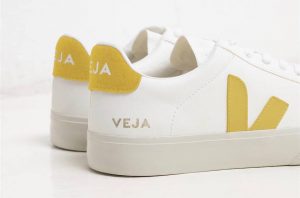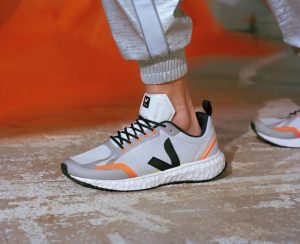TechInAfrica – Running shoes, among the others, have found a new way of reducing its usual plastic fare in what Veja, a French shoe company introduced with the launch of Condor. The $150 tagged collection is the first ‘post-petroleum’ running shoe, with some plastic residues churned in among the materials. The shoe does showcase the persistent nightmarish trait of plastic, as reflected on the almost equal percentage of plastic residues in the shoe’s material, in which the first 53% are bio-based and recycled materials, while the remaining 57% are consisting of virgin plastic and rubber. Taking the fastidious decomposing time of plastic (which can be at least 10 year or even 1000 year) into account, it has remain an on-going challenges for Veja to design a reduced plastic composition running shoe that retains the shoe’s overall flexibility that makes it just as great as the ones with full charging plastics on the market.

“It’s crazy material. A running shoe has to have flexibility, strength, ad memory; plastic is the best and cheapest material to do that,” Sebastien Kopp, the co-founder of Veja, said, when thinking about the essential plastic materials that make a shoe’s outer soles and cushy innards stiffer, while also utilized for lace loops and decorative decals, from TPU (thermoplastic polyurethane), EVA (ethylene vinyl acetate), to PET (polyethylene terephthalate).

Although Veja’s effort on eco-conscious shoes is not new, for a self-funded company, there hasn’t been a significant turn on running shoes. The ones in the market are not up for running, like Everlane and Allbirds’ casual shoes made from sugarcane and recycled plastic, or Adidas’ ocean plastic recycled shoes and Reebok’s fully recyclable sneakers composed of mainly cotton and corn. Still, Condor is yet to reach the marathon racing level. The outsole maximized its hard rubber for better durability and grip, and the midsole amp up a combination of 55% EVA (for light bounciness) and a bio-based foam made of banana oil (flexibility), rice husk (firmness), and sugarcane (that’ll mostly replace EVA in the future), while the insole mixes EVA, jute, wild rubber, recycled plastic bottles, and recycled EVA from the post-production scraps.
Source: Wired.com


